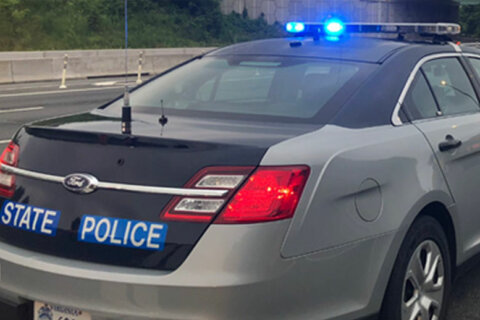This article was republished with permission from WTOP’s news partner InsideNoVa.com. Sign up for InsideNoVa.com’s free email subscription today.
This article was written by WTOP’s news partner, InsideNoVa.com, and republished with permission. Sign up for InsideNoVa.com’s free email subscription today.
Manassas police are starting to make use of their red light camera enforcement funds.
On Monday night, the City Council approved a resolution budgeting $1.5 million of what the city has collected from photo red light enforcement. The money will be used for new dispatch and records software.
Police officials say the $1.5 million is what they expect the program’s revenue to total by the end of the fiscal year, after some money is taken out to pay officers assigned to monitoring the system and issuing citations.
“From the very beginning, when we put this photo red light program in … people ask ‘what are the funds going to be used for?’” Police Chief Doug Keen said at a committee meeting last week. “It was always the plan that this is the type of thing, so it doesn’t come out of our taxpayer general fund basis.”
Keen said the department’s current computer-aided dispatch (CAD) system and records management system (RMS) are woefully outdated. The records system, he said, was put in place in 2008 and 2009, and the current software vendor doesn’t support the old software.
The photo enforcement cameras are at four intersections, three of which are along Liberia Avenue (at Centreville Road, Euclid Avenue and Signal Hill Road). The fourth is at Grant Avenue and Center Street.
The cameras record cars running red lights or making right on red movements without coming to a stop first. Separately, the police department is also installing speed cameras at several school zones.
Also on Monday night, the council approved a $193,000 equipment grant for the police department. The grant, issued from the Attorney General’s office to the commonwealth, will pay for a new transport van, ballistic vests, shields and helmets, as well as a drone with software.
According to Brett Stumpf, the department’s public information officer, the items were all requested by specialty entities “to stay at the edge of technology in those fields.”
“The body armor and helmets are lighter, newer technology that protects the officers better while they’re doing special operations,” Stumpf said.
The drone, meanwhile, will complement the larger outdoor drone that the department already has, but is more capable of maneuvering inside. Primarily, Stumpf said the department has used its drone to locate missing people using infrared technology, but he said it can also be used to enter potentially dangerous situations without sending in an officer or a dog.
“In essence, instead of having to send in human beings, officers into buildings that could potentially be hazardous, or even if there was potential for a violent encounter, it’s able to avoid that … and allows us to quicker clear structures without having to enter them,” Stumpf said. “It is the latest and greatest; it’s one of the nicest that’s on the market.”







